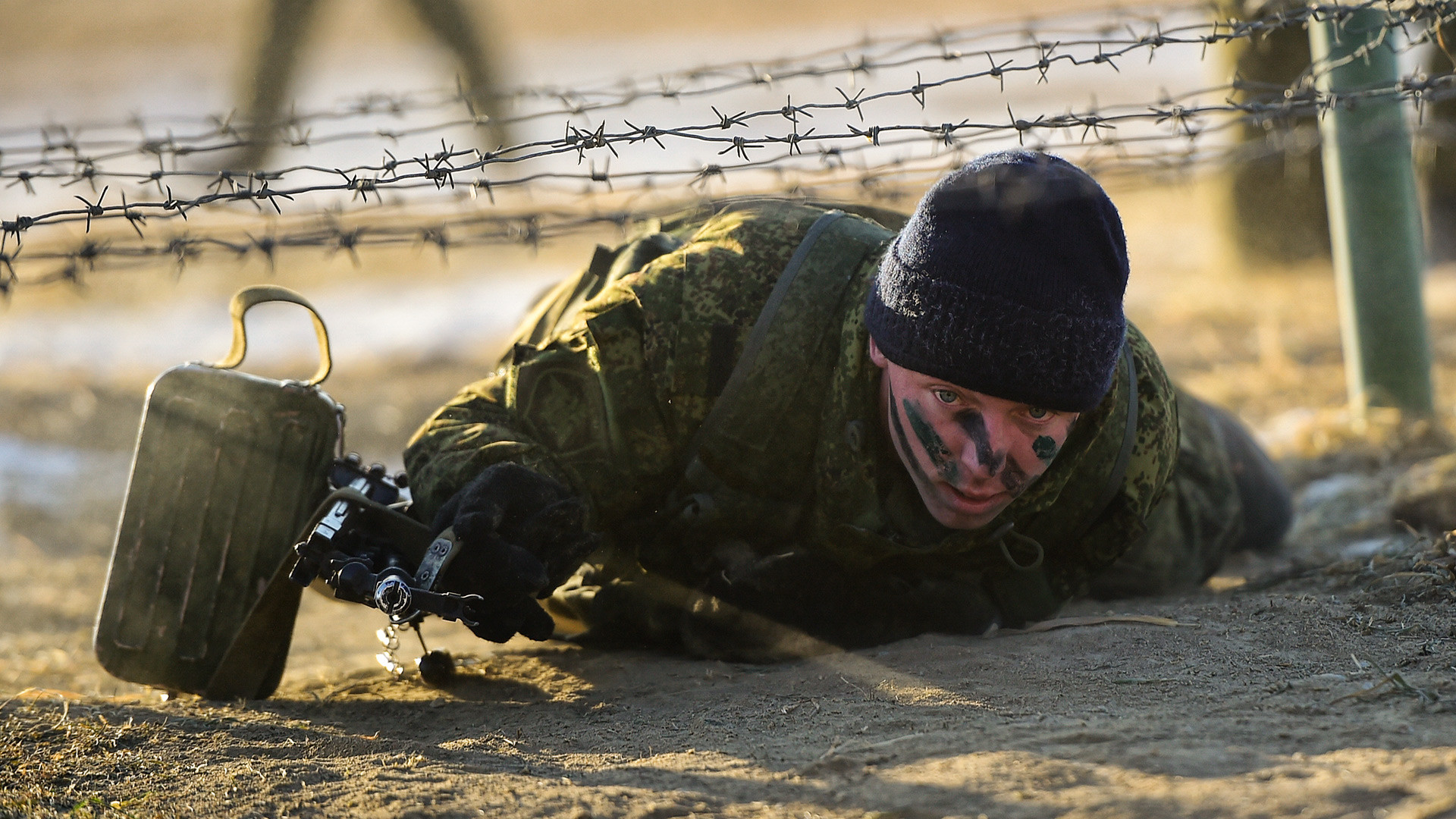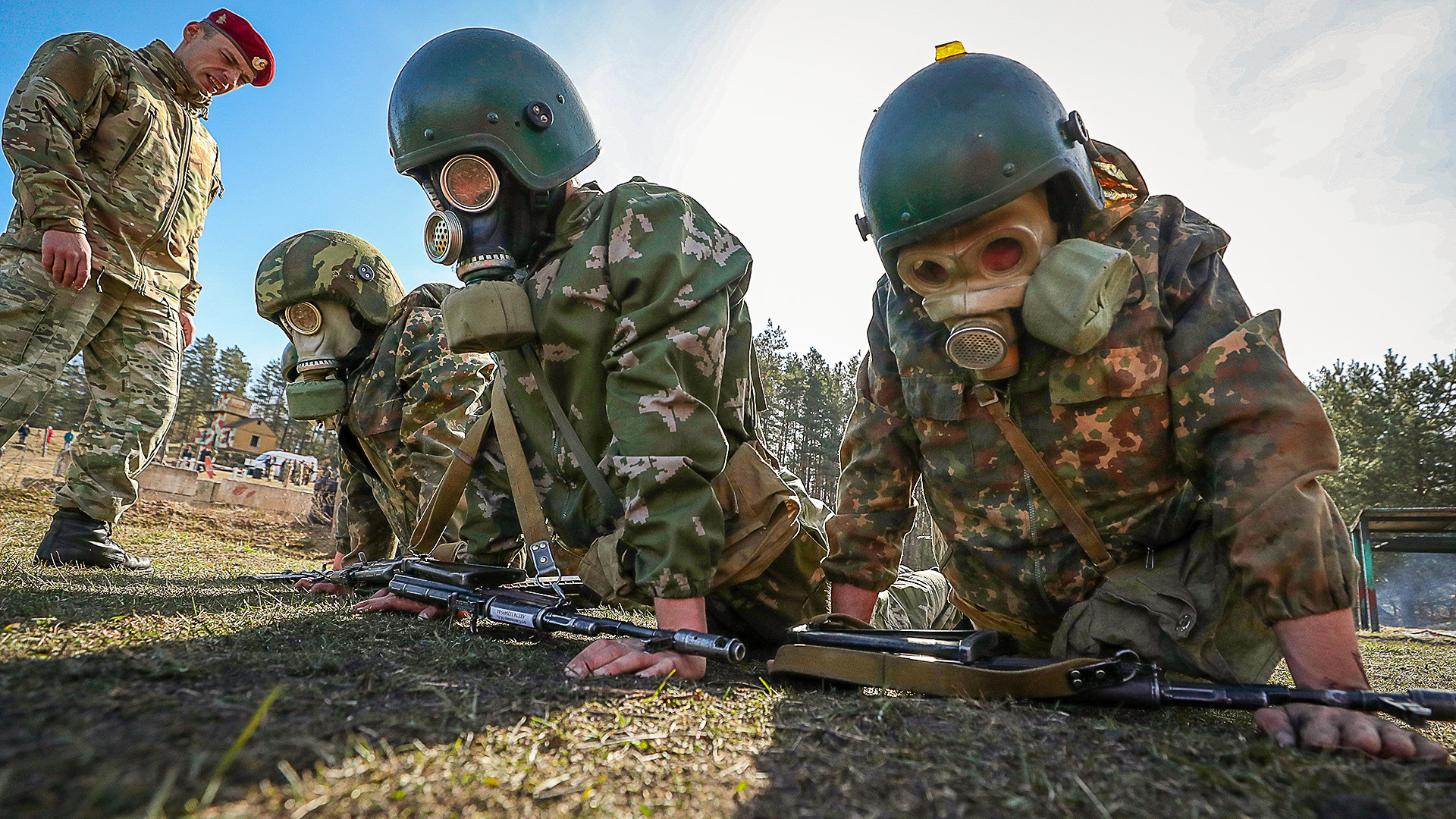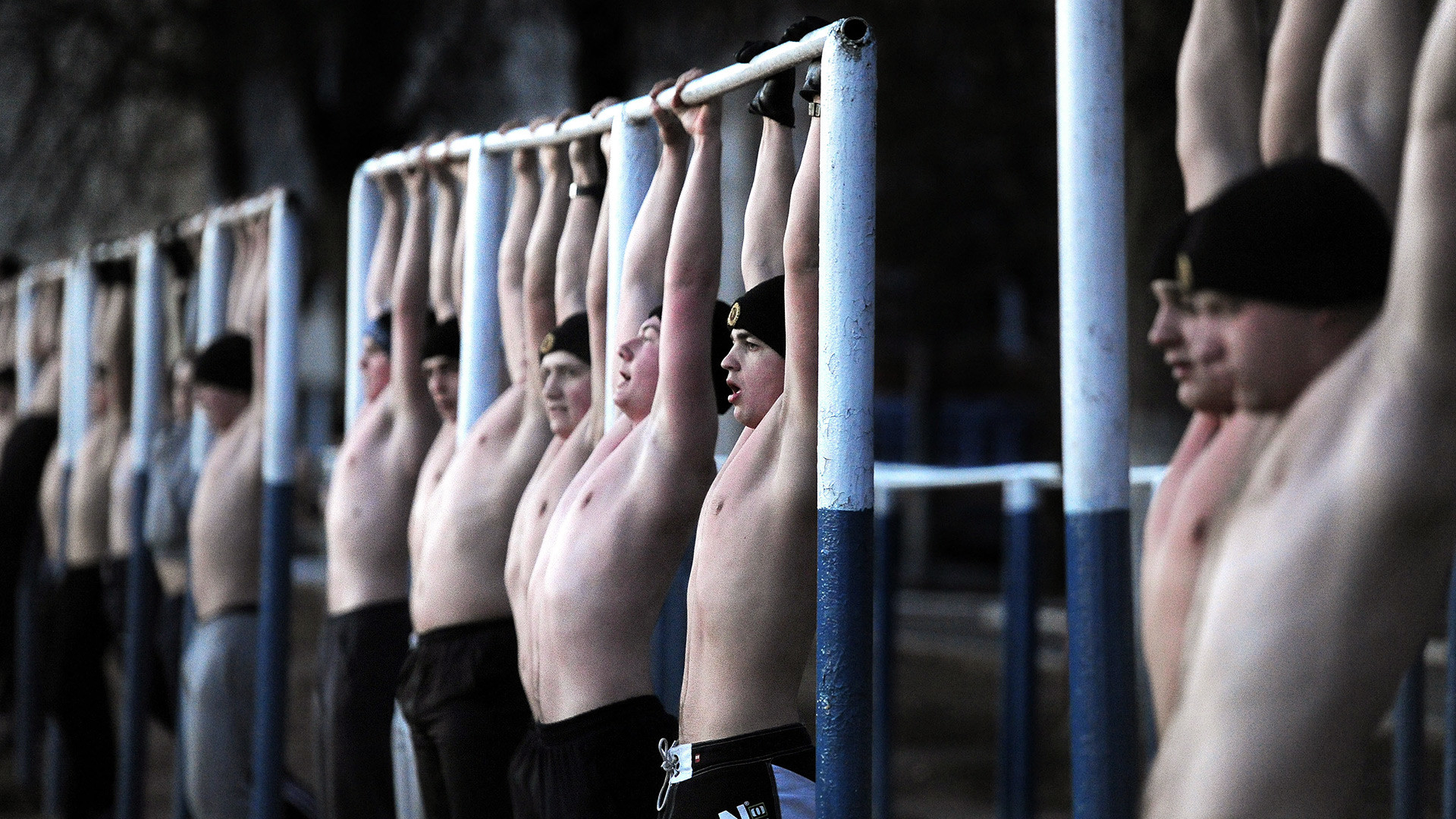How to work out like a spetsnaz commando

At 25, I quit my job and joined the army for a year. At the enlistment office, my personal file landed on the desk of those in charge of drafting special forces. Since I was older, smarter, and physically developed, I was selected for SpecOps.
Wakey, wakey

The training cycle in the Russian army begins with reveille at 0530 hrs (some units and troop bodies leave it till 0700, but no later!). Only on Sundays do you get to “lie in” and open your eyes at 0600 instead.
On “working” weekdays, morning gets underway to the commander’s screams of “Company, rise!” or the sound of shots from a defanged AK or the detonation of a stun grenade. After that, you have 60-120 seconds (depending on the time of the year: 60 in summer, 120 in winter) to pull on your slacks and run to the parade ground to join your company in front of the barracks.
Running and crawling

After line-up on the parade ground, there’s a quick limber-up before the commanders send you on a 10 km run in formation.
The only way to avoid this early morning "pleasure" is to hide in the hospital or volunteer to wash the barracks housing 180 soldiers. What a lovely alternative.
What’s more, for “good” service during the week, on Sundays you can be awarded with another 10 km dash, but this time in full gear — with machine gun, helmet, body armor, and duffel bag on your back (about 30 kg of extra weight altogether).
The run over rugged terrain usually includes crawling exercises to cries of “flash on the right!” This means metaphorically that the enemy just threw a grenade or an artillery shell just whizzed past your right ear, whereupon you have to abruptly change direction, shield your head with your hands, and continue moving forwards on your belly.
Crawls are great for working the small muscle groups and tendon ligaments.
There are three ways to crawl: on the stomach, on the back, or the minefield technique (you lie down, feel for bumps in the ground, pull yourself forward, then feel for bumps again — if something arouses suspicion, you move to the side).
Let me say right away that the exercises and targets seem far worse on paper than they are in reality. There is nothing abnormal about running 10 km early in the morning. Especially when you have no alternative, and you’re specifically training your body to endure such loads.
Circuit training for strength endurance

This set develops endurance, explosive strength, and… a visceral hatred for the trainers (aka superiors) who force you to do it.
The reason is simple — the set is executed until the sergeant gets bored of driving you on, or you just drop dead on the parade ground. But remember that death is no excuse for not completing your army training.
After the 10 km run, the sergeant lets you rest for 5 minutes before moving onto the circuit training exercises, which are performed one after another with no break.
The cycle looks as follows:
Squat jumps (10 reps)
Push-ups on fists (30 reps)
Pull-ups (10 reps)
Squat jumps (10 reps)
Push-ups on fists (30 reps)
Pull-ups (10 reps)
Sit-ups (till breaking point)
Break between circuits — 5 minutes; the set is performed until the body can take no more.
Increasing the load
Over time, you get accustomed to the strength training as well as the cross-country runs. What’s more, the best way to develop is to increment the number of push-ups by one rep per day. Best of all, draw up a training plan for the week in advance, and stick to it unconditionally.
Can’t perform the required number of reps in one go? Don’t worry. You can do them in chunks during the day. The main thing is persistence and discipline.
The 21-day rule applies here. If you do something at the same time daily for this period, it becomes a habit and the organism can no longer do without it.
If using any of Russia Beyond's content, partly or in full, always provide an active hyperlink to the original material.
Subscribe
to our newsletter!
Get the week's best stories straight to your inbox